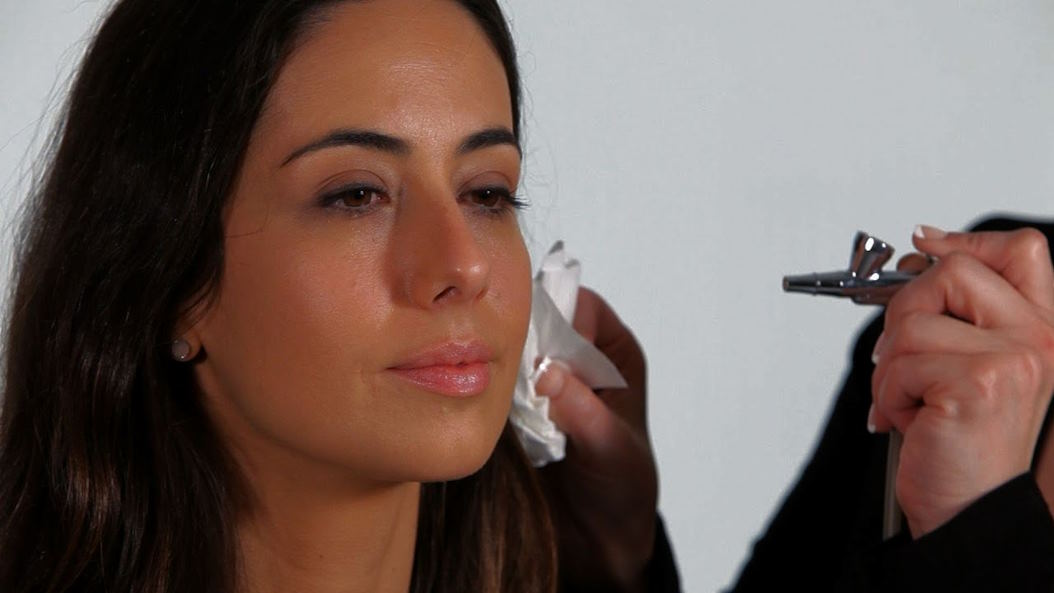The Art of Mixing Traditional and Airbrush Makeup Techniques

The marriage of traditional and airbrush makeup techniques marks a revolutionary shift, challenging the status quo and inspiring a new era in the world of cosmetics. As we explore the synergy between the tried-and-true methods of traditional makeup and the futuristic allure of airbrush application, we invite you to unlock the secrets of achieving a radiant and flawless finish.
Understanding Traditional Makeup Techniques
Overview of Traditional Makeup Application:
Traditional makeup application involves the use of conventional products applied using brushes, sponges, or fingers. This time-honored method emphasizes the tactile artistry of makeup, allowing for a hands-on approach to achieve desired looks. From everyday wear to special occasions, traditional makeup has been a staple in the beauty industry for its versatility.
Products Commonly Used in Traditional Makeup:
The arsenal of traditional makeup includes foundation, concealer, powder, blush, eyeshadow, and lipstick. These products come in a variety of formulations, catering to different skin types and tones. The tactile nature of traditional makeup products provides makeup artists and enthusiasts the ability to layer and blend for a personalized finish.
Techniques for Foundation, Contouring, and Highlighting:
In traditional makeup, foundation serves as the canvas for a flawless complexion. Contouring sculpts facial features, while highlighting accentuates points of radiance. Techniques involve blending with precision, creating depth and dimension. This method allows for meticulous control, enabling makeup artists to enhance natural beauty or experiment with transformative looks.
 Pros and Cons of Traditional Makeup Application:
Pros and Cons of Traditional Makeup Application:
Pros:
- Artistic control and precision
- Wide variety of product options
- Versatility for various makeup styles
Cons:
- Potential for a heavier feel on the skin
- May require more time for application
- Touch-ups may be needed throughout the day
The Rise of Airbrush Makeup
Introduction to Airbrush Makeup Technology:
As technology continues to revolutionize the beauty industry, airbrush makeup has emerged as a game-changer. This innovative technique employs a small, air-powered tool to spray a fine mist of makeup onto the skin, creating a flawless finish with a unique airbrushed effect.
Advantages of Airbrush Makeup:
Airbrush makeup is celebrated for its lightweight feel and remarkable durability. The fine mist application provides even coverage, offering a smooth, natural look that can withstand the test of time. It’s a popular choice for brides, celebrities, and anyone seeking a photo-ready, long-lasting complexion.
Overview of Airbrush Equipment and Products:
Airbrush systems typically consist of a compressor, airbrush gun, and specially formulated makeup. These products come in a wide range of colors, catering to various skin tones and preferences. The equipment allows for precise control over the amount and placement of makeup, resulting in a seamless, airbrushed finish.
Techniques for Airbrush Foundation, Blush, and Eyeshadow Application:
Airbrush foundation creates a flawless base, while airbrush blush and eyeshadow contribute to a seamless look. Techniques involve controlled movements to build layers gradually, achieving the desired intensity without compromising the natural appearance.
Pros and Cons of Airbrush Makeup Application:
Pros:
- Lightweight and natural finish
- Long-lasting and transfer-resistant
- Ideal for high-definition photography
Cons:
- Initial investment in equipment
- Learning curve for beginners
- Limited availability of color options compared to traditional makeup
The Art of Blending: Combining Traditional and Airbrush Techniques
Recognizing the Strengths of Each Technique:
Traditional and airbrush makeup each bring unique strengths to the table. Traditional techniques offer hands-on precision and a diverse range of product options, while airbrushing provides a lightweight, flawless finish. Recognizing the strengths of both methods sets the stage for a harmonious blend that leverages the best of both worlds.
Selecting Products that Complement Both Methods:
The key to a successful fusion lies in selecting products that work seamlessly together. Choose traditional foundations and contour products that blend effortlessly with airbrushed finishes. Harmonizing textures and formulations ensures a cohesive and polished overall look.
Step-by-Step Guide to Seamlessly Integrate Techniques:
Begin with traditional techniques for a solid foundation, employing brushes and sponges to define contours. Then, strategically introduce airbrushing for an ethereal, airbrushed glow. This step-by-step integration allows for meticulous control and a gradual transition, achieving a flawless hybrid result.
Tips for Achieving a Natural, Flawless Finish:
Blend with purpose, focusing on marrying traditional and airbrushed areas for a cohesive appearance. Use blending tools to soften edges and ensure a seamless transition between the two techniques. Embrace the artistry of layering to achieve depth and dimension while maintaining a natural, flawless finish.


